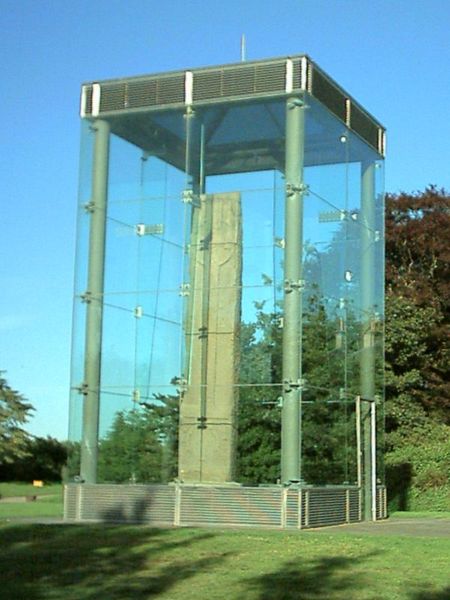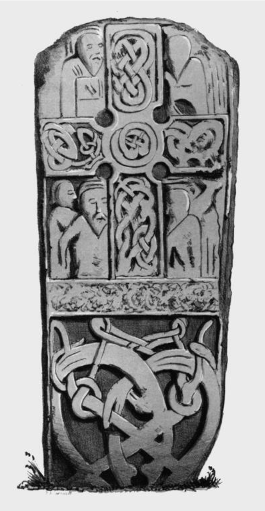|
Forres
Forres (; ) is a town and former royal burgh in the north of Scotland on the County of Moray, Moray coast, approximately northeast of Inverness and west of Elgin, Moray, Elgin. Forres has been a winner of the Scotland in Bloom award on several occasions. There are many geographical and historical attractions nearby such as the River Findhorn, and there are also classical, historical artifacts and monuments within the town itself, such as Forres Tolbooth and Nelson's Tower. Brodie Castle, the home of the Brodie Clan, lies to the west of the town, close to the A96. Pre-history and archaeology Between 2002 and 2013 some 70 hectares of land was investigated by archaeologists in advance of a proposed residential development on the southern fringes of the town. They found an extensive Iron Age settlement and evidence that people lived in the area from the Neolithic British Isles, Neolithic (Radiocarbon dating, radiocarbon dates from the 4th to the mid-3rd millennium BC were found) ... [...More Info...] [...Related Items...] OR: [Wikipedia] [Google] [Baidu] |
Forres Tolbooth
The Forres Tolbooth is a municipal building on the High Street in Forres in Scotland. The building, which is used as a visitor attraction, is a Category A listed building. History The first tolbooth in Forres was completed in the mid-16th century. It was primarily used as a prison, but was in a ruinous condition by 1655. Extensive repairs were carried out in the 1670s and the late 1690s. A bell was installed in 1708 and a clock was installed in 1711. The foundation stone for the current structure was laid in 1838. It was designed by William Robertson in the Scottish baronial style, built in ashlar stone, and was completed in 1839. The design involved a five-stage tower facing southwest down the High Street. There was a round headed doorway with an archivolt in the first stage, a round headed window with an archivolt in the second stage, a corbelled parapet with corner bartizans at the top of the third stage, clock faces with more corner bartizans in the fourth stage, and a tall ... [...More Info...] [...Related Items...] OR: [Wikipedia] [Google] [Baidu] |
River Findhorn
The River Findhorn () is one of the longest rivers in Scotland. Located in the north east, it flows into the Moray Firth on the north coast. It has one of the largest non-firth estuary, estuaries in Scotland. The river is c. ''Almanac of Scotland'' Retrieved 9 June 2018. long and the catchment area is The river provides excellent salmon and trout fishing and is popular with anglers from around the globe. It is also one of Scotland's classic white water kayaking rivers (varying from grade 2 to 4) and draws canoeists from across the country."River Findhorn - Gorge" ''The UK Rivers Guidebook''. U ... [...More Info...] [...Related Items...] OR: [Wikipedia] [Google] [Baidu] |
Sueno's Stone
Sueno's Stone is a Picts, Picto-Scottish pictish stone, Class III standing stone on the north-easterly edge of Forres in Moray and is the largest surviving Pictish style cross-slab stone of its type in Scotland, standing in height. It is situated on a raised bank on a now isolated section of the former road to Findhorn. The stone is named after Sweyn Forkbeard, but this association has been challenged and it has also been associated with the killing of King Dub, King of Scotland, Dubh mac Ailpin in Forres in 966. The stone was erected but by whom and for what, is unknown. Possible second pillar Evidence from Timothy Pont's Mapp of Murray (), the more modern military maps of Roy and Ainslie (1750 and 1789 respectively) and Robert Campbell's map of 1790 all show Sueno's Stone along with another stone that has now disappeared. The fact that Pont's map shows the standing stones indicates their size as Pont does not show any other obelisks anywhere. Ainslie has inscribed on his map ... [...More Info...] [...Related Items...] OR: [Wikipedia] [Google] [Baidu] |
County Of Moray
The County of Moray, ( ) or Morayshire, called Elginshire until 1919, is a historic county in Scotland. The county town was Elgin. The historic county ceased to be used for local government purposes in 1975. Since 1996 most of the historic county's area has been included in the Moray council area. The historic county boundaries are still used for certain functions, being a registration county. There is also a Moray lieutenancy area, covering a slightly smaller area than the historic county. The historic county borders Nairnshire to the west, Inverness-shire to the south, and Banffshire to the east, and has a coast onto the Moray Firth to the north. History Moray was a province in the Middle Ages, covering a much larger area than the later county. It lay to the north of the Kingdom of Alba (early Scotland), sometimes functioning as a vassal of the Scottish crown, and at other times operating as a separate kingdom. Moray was finally absorbed into the Kingdom of Scotland ... [...More Info...] [...Related Items...] OR: [Wikipedia] [Google] [Baidu] |
Moray
Moray ( ; or ) is one of the 32 council areas of Scotland. It lies in the north-east of the country, with a coastline on the Moray Firth, and borders the council areas of Aberdeenshire and Highland. Its council is based in Elgin, the area's largest town. The main towns are generally in the north of the area on the coastal plain. The south of the area is more sparsely populated and mountainous, including part of the Cairngorms National Park. The council area is named after the historic county of Moray (called Elginshire prior to 1919), which was in turn named after the medieval Province of Moray, each of which covered different areas to the modern council area. The modern area of Moray was created in 1975 as a lower-tier district within the Grampian Region. The Moray district became a single-tier council area in 1996. History The name, first attested around 970 as ', and in Latinised form by 1124 as ', derives from the earlier Celtic forms *''mori'' 'sea' and *''treb'' ... [...More Info...] [...Related Items...] OR: [Wikipedia] [Google] [Baidu] |
Moray West, Nairn And Strathspey (UK Parliament Constituency)
Moray West, Nairn and Strathspey is a constituency of the House of Commons in the UK Parliament. Further to the completion of the 2023 review of Westminster constituencies, it was first contested at the 2024 general election, and is currently represented by Graham Leadbitter of the Scottish National Party. Boundaries The constituency comprises the following: * In full: the Highland Council wards of Nairn and Cawdor, Badenoch and Strathspey; and the Moray Council wards of Elgin City North, Elgin City South, Forres, Heldon and Laich, Speyside Glenlivet. * In part: the Highland Council ward of Culloden and Ardersier (eastern areas comprising minority of electorate); and the Moray Council ward of Fochabers Lhanbryde (west of the River Spey The River Spey () is a river in the northeast of Scotland. At it is the ninth longest river in the United Kingdom and the third longest and fastest-flowing river in Scotland. It is an important location for the traditions of salmon f ... [...More Info...] [...Related Items...] OR: [Wikipedia] [Google] [Baidu] |
Royal Burgh
A royal burgh ( ) was a type of Scottish burgh which had been founded by, or subsequently granted, a royal charter. Although abolished by law in 1975, the term is still used by many former royal burghs. Most royal burghs were either created by Scottish monarchy, the Crown, or upgraded from another status, such as burgh of barony. As discrete classes of burgh emerged, the royal burghs—originally distinctive because they were on royal lands—acquired a monopoly of foreign trade. An important document for each burgh was its burgh charter, creating the burgh or confirming the rights of the burgh as laid down (perhaps orally) by a previous monarch. Each royal burgh (with the exception of four 'inactive burghs') was represented in the Parliament of Scotland and could appoint bailies with wide powers in civil and criminal justice.George S Pryde, ''The Burghs of Scotland: A Critical List'', Oxford, 1965. The four inactive burghs were Auchtermuchty, Earlsferry, Falkland and Newburgh ... [...More Info...] [...Related Items...] OR: [Wikipedia] [Google] [Baidu] |
Macbeth
''The Tragedy of Macbeth'', often shortened to ''Macbeth'' (), is a tragedy by William Shakespeare, estimated to have been first performed in 1606. It dramatises the physically violent and damaging psychological effects of political ambitions and power. It was first published in the Folio of 1623, possibly from a prompt book, and is Shakespeare's shortest tragedy. Scholars believe ''Macbeth'', of all the plays that Shakespeare wrote during the reign of King James I, contains the most allusions to James, patron of Shakespeare's acting company. In the play, a brave Scottish general named Macbeth receives a prophecy from a trio of witches that one day he will become King of Scotland. Consumed by ambition and spurred to violence by his wife, Macbeth murders the king and takes the Scottish throne for himself. Then, racked with guilt and paranoia, he commits further violent murders to protect himself from enmity and suspicion, soon becoming a tyrannical ruler. The bloo ... [...More Info...] [...Related Items...] OR: [Wikipedia] [Google] [Baidu] |
Moray (Scottish Parliament Constituency)
Moray ( ; ; or ') is a constituency of the Scottish Parliament ( Holyrood) covering most of the council area of Moray. It elects one Member of the Scottish Parliament (MSP) by the first past the post method of election. It is also one of eight constituencies within the Highlands and Islands electoral region, which elects seven additional members, in addition to the eight constituency MSPs, to produce a form of proportional representation for the region as a whole. The seat has been held since 2006 by Richard Lochhead of the Scottish National Party. Lochhead won the seat in a by-election held following death of the previous incumbent, Margaret Ewing of the SNP, from breast cancer. Electoral region The Moray constituency is part of the Highlands and Islands electoral region; the other seven constituencies are Argyll and Bute, Caithness, Sutherland and Ross, Inverness and Nairn, Na h-Eileanan an Iar, Orkney, Shetland and Skye, Lochaber and Badenoch. The ... [...More Info...] [...Related Items...] OR: [Wikipedia] [Google] [Baidu] |
Elgin, Moray
Elgin ( ; ; ) is a historic town (former cathedral city) and formerly a royal burgh in Moray, Scotland. It is the administrative and commercial centre for Moray. The town originated to the south of the River Lossie on the higher ground above the floodplain where the town of Birnie is. There, the church of Birnie Kirk was built in 1140 and still serves the community. Elgin is first documented in the Cartulary of Moray in 1190 AD. It was created a royal burgh in the 12th century by King David I of Scotland, and by that time had a castle on top of the present-day Lady Hill to the west of the town. The origin of the name Elgin is likely to be Celtic. It may derive from 'Aille' literally signifying beauty, but in topography a beautiful place or valley. Another possibility is 'ealg', meaning both 'Ireland' and 'worthy'. The termination 'gin' or 'in' are Celtic endings signifying little or diminutive forms, hence Elgin could mean beautiful place, worthy place or little Ireland. Histor ... [...More Info...] [...Related Items...] OR: [Wikipedia] [Google] [Baidu] |








